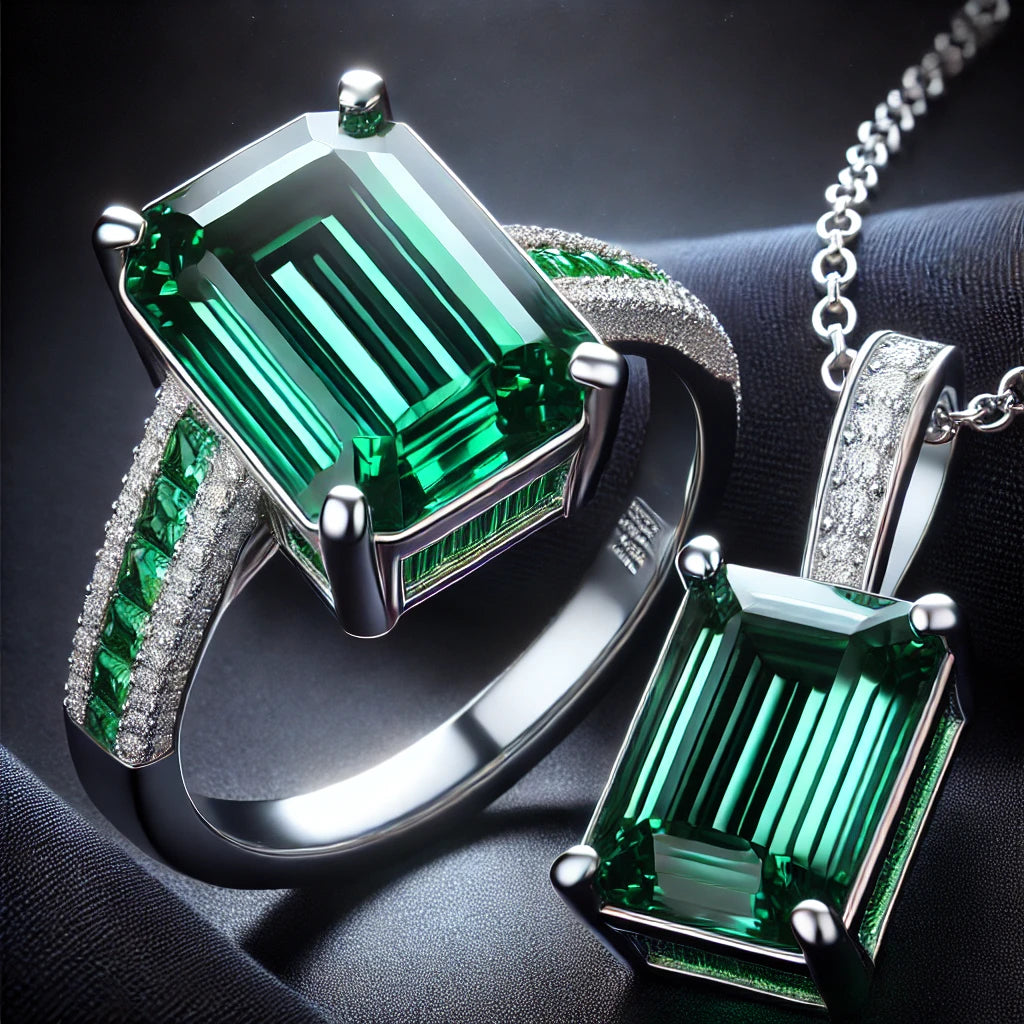
Understanding the Value of Emeralds: A Gemstone's Journey Through Quality and Price
Share
Emeralds, with their lush green hues, have captivated jewelry lovers for centuries. However, what many may not realize is that the price of these stunning gemstones is not just about size, but intricately tied to their quality. Let's unravel the factors that contribute to the cost of an emerald, helping you understand what makes some more valuable than others.
Clarity and Color: The Heart of Emerald Value
The most significant factors in determining an emerald's value are clarity and color. Emeralds are known for their inclusions, often referred to as "jardins" or gardens. While these inclusions are expected, the type, size, and location can significantly impact the gemstone's clarity and hence its price. A highly clear emerald with minimal inclusions commands a higher price.
Color plays a pivotal role as well. The most prized emeralds boast a deep, vivid green with a slight bluish hue. The saturation, tone, and evenness of the color can make a substantial difference in value. An emerald that exhibits a rich and evenly distributed color will be more expensive compared to those with lighter tones or uneven color distribution.
Cut and Carat: Size and Shape Matter
The cut of an emerald not only enhances its beauty but also its worth. A well-executed cut can maximize the stone's color and clarity, elevating its overall appearance and value. However, the cutting process can lead to a loss in carat weight, making larger, well-cut emeralds rarer and more expensive.
Speaking of size, the carat weight of an emerald significantly influences its price. Larger emeralds are rarer, and their price per carat rises exponentially with size. This means a 3-carat emerald will be more than three times the price of a 1-carat emerald, provided other quality factors are equal.
Treatment and Origin: Additional Considerations
Most emeralds undergo some form of treatment, typically oiling, to enhance clarity. The type and extent of these treatments can affect value. Untreated or minimally treated emeralds are rarer and thus more valuable.
Lastly, the origin of an emerald can play a role in its valuation. Stones from traditional sources like Colombia or Zambia might fetch higher prices due to their renowned quality and color.
In Conclusion
When considering an emerald's price, it's essential to look beyond its size. Factors like clarity, color, cut, carat weight, treatment, and origin collectively determine its value. Understanding these elements can help you appreciate the beauty and worth of each unique emerald, making your investment not just in a stone, but in a piece of Earth's treasured history.
